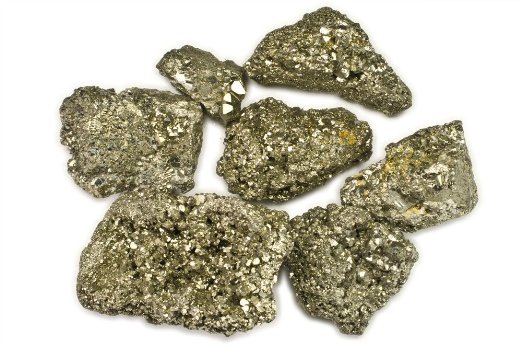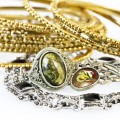What Is White Gold Made Of?
White gold is made out of yellow gold mixed with other metals, which are added to make the alloy harder and whiter.
The additional metals used in white gold are usually palladium, silver, zinc, copper, and nickel.
Even when mixed with whiter metals, white gold still retains a yellowish hue.
That’s why white gold jewelry is usually covered with a thin layer of rhodium, which gives the white gold alloy its characteristic metallic luster.
What Determines the Quality of White Gold Jewelry?
The quality characteristic most often used to evaluate white gold is its karat.
This unit of measurement has the same meaning as when used to evaluate yellow gold – it indicates the alloy’s purity, and more specifically, the proportion of gold to other metals in the mix.
In general, since gold is not cheap, the higher the karat of white gold, the more expensive it is per gram.
Another quality indicator for white gold can be its nickel content – some people prefer gold alloys that do not contain this metal since it can cause rashes in people allergic to it.
If you think you might have such an allergy, make sure to ask whether the white gold you are considering is nickel free.
It is preferable if the rhodium plating on white gold is thicker, as a very thin coating will tend to wear off quickly, exposing the yellowish layer beneath. When that happens, you can have your white gold jewelry replated for a fee.
Determining the Karats of White Gold
To determine the karat of white gold jewelry, you can either look at its hallmarks or have it tested for purity in case there are no marks.
Karat Marks for White Gold Jewelry
The karat stamps on white gold are easy to interpret. The karat number is usually followed by letters such as K or KT.
For example, 18KT stamped on a white gold ring means that it is 18 karats, which also means that it contains 75% pure gold.
Parts-per-thousand marks are also used, and they denote how many thousandths of the gold alloy are actually pure gold.
For example, if you see a white gold piece marked with the number 750 instead of a karat number, this means that every 1000 units of the alloy contain 750 units of gold.
Dividing a parts-per-thousand number by 10 will give you its percentage equivalent. Thus, the 750 mark mentioned above denotes 75% gold content, which is equal to 18 karats, as we already saw earlier.
Multiplying a parts-per-thousand number by 0.024 will convert it to its karat equivalent. So, if you see marks such as 417, 583, or 917, you can easily calculate that they actually translate to 10 karats, 14 karats, and 22 karats, respectively.
Karat Testing for White Gold
White gold can be tested for purity with nitric acid. If you buy a gold testing kit, you can do the testing at home.
The kit will contain bottles with nitric acid with karat labels on them – each label indicates the purity of the alloy that the solution is prepared to identify.
This is how the testing process works:
1. You will need to scratch your white gold jewelry on the surface of the testing slab included in the kit. The scratching should leave a visible gold mark on the stone.
Make sure you press hard enough so that you get through the rhodium plating to the actual gold alloy underneath. Don’t rub your jewelry in a place that is readily visible!
2. Take the acid bottle with the lowest karat label – e.g., the one that says “10 karats.” Pour some acid on the gold mark and observe whether there is a reaction.
3. If the gold trace loses its color and dissolves, the jewelry’s karat number is less than what is written on the label of the bottle.
4. If the mark changes its color only slightly but does not disappear, then its karat is very close or equal to what the bottle label says.
5. If the color of the mark does not change, then its purity is above the karat label number, and you should try a higher-karat bottle until you get a reaction.
Make sure to read the instructions accompanying the gold testing kit carefully before proceeding!
You can also go to a jewelry store and ask to have your white gold tested there. The jeweler will most likely use the same method as the one described above to find out the karat of your white gold.
Where to Buy White Gold?
For white gold jewelry with diamonds, emeralds, rubies, or sapphires, we recommend James Allen (read review) because you can take a 360-degree look at any stone before buying it.
Blue Nile is another reputable diamond retailer we recommend.















